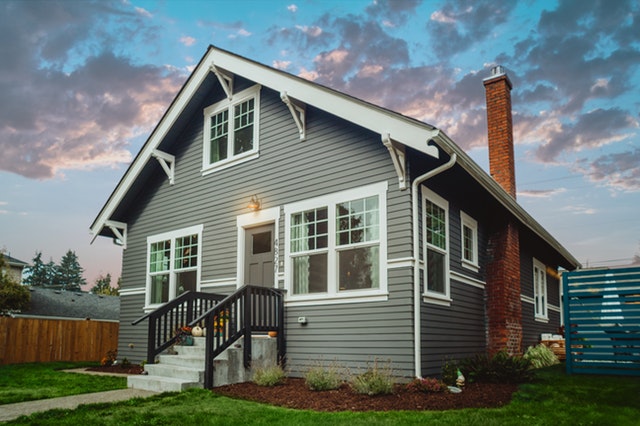 Case-Shiller Home Price Indices reported that national growth of home prices rose by 0.30 percent in November. Analysts said that slim inventories of available homes boosted home prices. Whether or not home price growth continues gaining speed depends on variables including supplies of homes for sale, affordability and home-buyer confidence in the economy.
Case-Shiller Home Price Indices reported that national growth of home prices rose by 0.30 percent in November. Analysts said that slim inventories of available homes boosted home prices. Whether or not home price growth continues gaining speed depends on variables including supplies of homes for sale, affordability and home-buyer confidence in the economy.
Mr. Craig Lazzara, managing director and global head of index investment strategy at S&P Dow Jones Indices said, “It is, of course, too soon to say whether this marks an end to the deceleration [of home price growth] or is merely a pause in the longer-term trend.”
Phoenix Holds First Place In Home-Price Growth For 6 Consecutive Months
Case-Shiller’s 20-City Home Price Index showed that all cities tracked reported year-over-year growth in home prices after seasonal adjustments. Phoenix, Arizona held the top position with home price growth of 5.90 percent; Charlotte, North Carolina held second place in the 20-City Index with 5.20 percent growth in home prices and Tampa, Florida held third place with year-over-year home price growth of 5.00 percent.
The Case-Shiller 20-City Home Price Index posted a year-over-year gain of 2.60 percent in November and home prices rose by 0.10 percent in November as compared to October. Case-Shiller reported that home price growth increased by 3.50 percent nationally on a seasonally adjusted annual basis.
Buyers Seeking Affordable Homes Inland
Home-buyers sought less expensive homes in inland states as high-priced homes in coastal regions continued to be unaffordable for many. Slim supplies of homes contributed to bidding wars that drove home prices higher. Analysts said that home prices are set to drop in high-cost markets as the home-buyers move to more affordable markets.
The Federal Housing Finance Agency, which oversees Fannie Mae and Freddie Mac, reported a 4.90 percent gain in November home prices for properties associated with mortgages owned by Fannie Mae and Freddie Mac; this reading was compiled on a seasonally-adjusted annual basis.
FHFA data noted that the Mountain Region reported slower month-to-month growth in home prices in November, but all geographic regions reported positive growth in home prices year-over-year. The Mountain region includes the states of Arizona, Colorado, Idaho, Montana, Nevada, New Mexico, Utah, and Wyoming; these states typically offer a lower cost of living and affordable home prices as compared to high priced coastal areas.

 The Federal Open Market Committee of the Federal Reserve announced its unanimous decision not to change to the current target federal funds range of 1.50 to 1.75 percent. The committee’s customary post-meeting statement said the decision not to change the Fed’s target range for federal funds was based on factors including a strong labor market, moderate economic growth, continued job growth, and low unemployment.
The Federal Open Market Committee of the Federal Reserve announced its unanimous decision not to change to the current target federal funds range of 1.50 to 1.75 percent. The committee’s customary post-meeting statement said the decision not to change the Fed’s target range for federal funds was based on factors including a strong labor market, moderate economic growth, continued job growth, and low unemployment. Case-Shiller’s National Home Price Index reported U.S. home prices grew by 3.20 percent year-over-year in July; as compared to year-over-year home price growth 0f 3.00 percent posted in June. Cities with the highest rates of year-over-year home price growth were Phoenix, Arizona with 5.80 percent year-over-year home price growth. Las Vegas, Nevada had 4.70 percent year-over-year home price appreciation and Charlotte, North Caroline bumped Tampa, Florida from the top three cities with home price appreciation of 4.60 percent. Tampa, Florida posted 4.50 percent year-over-year home price growth in July.
Case-Shiller’s National Home Price Index reported U.S. home prices grew by 3.20 percent year-over-year in July; as compared to year-over-year home price growth 0f 3.00 percent posted in June. Cities with the highest rates of year-over-year home price growth were Phoenix, Arizona with 5.80 percent year-over-year home price growth. Las Vegas, Nevada had 4.70 percent year-over-year home price appreciation and Charlotte, North Caroline bumped Tampa, Florida from the top three cities with home price appreciation of 4.60 percent. Tampa, Florida posted 4.50 percent year-over-year home price growth in July. The Federal Reserve’s Federal Open Market Committee reduced its key short-term interest rate range one-quarter percent to 1.75 to 2.00 percent during it’s September meeting. While FOMC members had mixed opinions on reducing the benchmark rate range for short term loans, the post-meeting statement suggested that reducing the federal funds rate was a hedge against inflation. The federal funds rate impacts short-term consumer loan rates for autos and adjustable rate mortgages, but does not impact fixed mortgage rates. FOMC monetary policy decisions are governed by the Federal Reserve’s dual mandate of maintaining price stability and an inflation rate of 2.00 percent.
The Federal Reserve’s Federal Open Market Committee reduced its key short-term interest rate range one-quarter percent to 1.75 to 2.00 percent during it’s September meeting. While FOMC members had mixed opinions on reducing the benchmark rate range for short term loans, the post-meeting statement suggested that reducing the federal funds rate was a hedge against inflation. The federal funds rate impacts short-term consumer loan rates for autos and adjustable rate mortgages, but does not impact fixed mortgage rates. FOMC monetary policy decisions are governed by the Federal Reserve’s dual mandate of maintaining price stability and an inflation rate of 2.00 percent. The National Association of Home Builders Housing Market Index shows steady builder confidence in housing market conditions. September’s index reading of 68 was one point higher than August’s reading. Any reading over 50 indicates that most home builders surveyed view housing market conditions as favorable. August’s original index reading was adjusted upward by one point.
The National Association of Home Builders Housing Market Index shows steady builder confidence in housing market conditions. September’s index reading of 68 was one point higher than August’s reading. Any reading over 50 indicates that most home builders surveyed view housing market conditions as favorable. August’s original index reading was adjusted upward by one point.